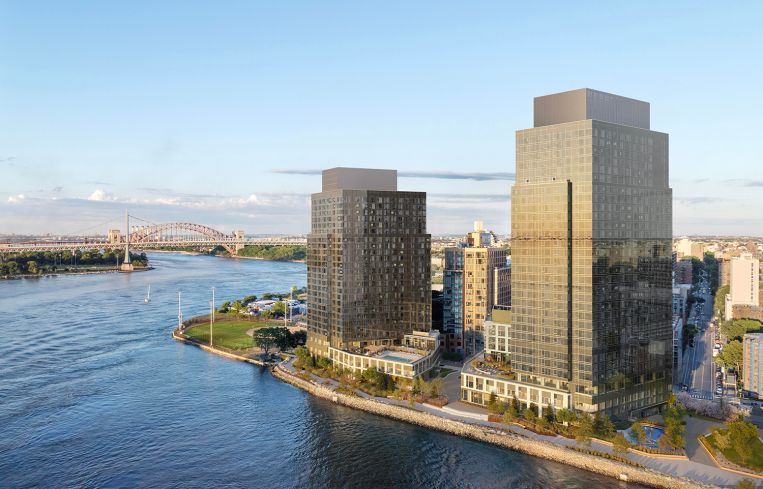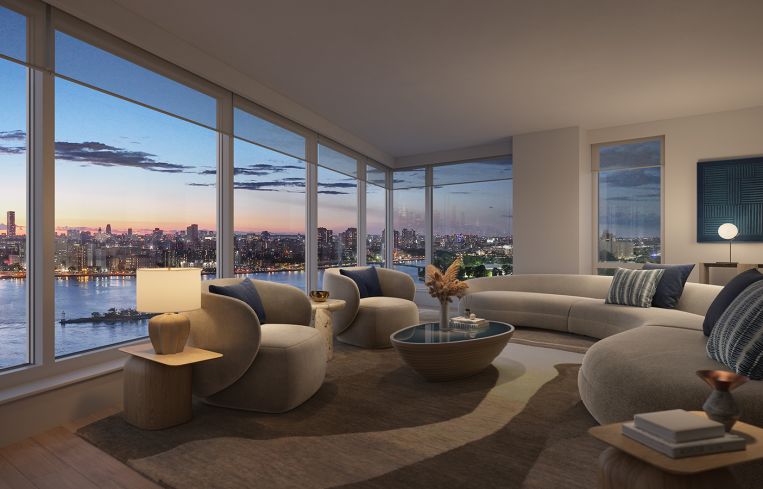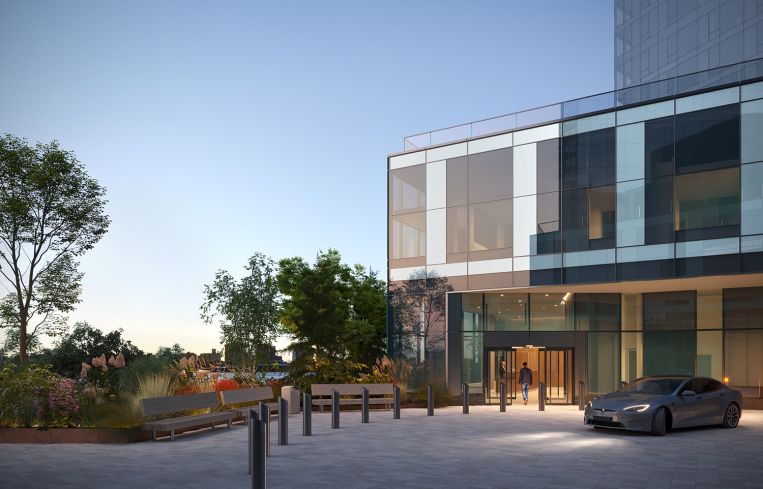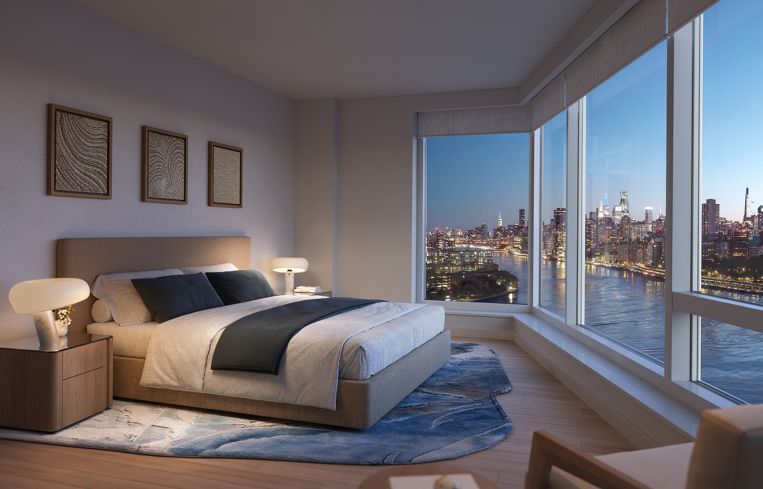The Plan: Durst Brings Waterfront Park to Astoria With Latest Halletts Point Towers
By Anna Staropoli October 17, 2024 6:00 am
reprints





Come spring of 2025, anyone in Astoria, Queens, can mosey along the esplanade at Halletts Point, pausing for a picnic or maybe a playdate at the park’s playground. The publicly accessible waterfront stretch encapsulates the Durst Organization’s plan for 20 and 30 Halletts Point, the next phase of its overarching mixed-use Halletts Point development.
“Residents will have a park at their footsteps, outside their door,” said Alexander Durst, principal and chief development officer at the Durst Organization. “[The site has] gone from an abandoned waterfront in disrepair to new housing for New Yorkers with neighborhood retail and, of course, the new public esplanade for residents and the community to enjoy.”
In 2019, Halletts Point brought retail and 405 housing units to the neighborhood with its first phase, the 22-story 10 Halletts Point. Now, the project’s next two buildings — 20 and 30 — are under construction.
When completed next year, the 27-story 20 Halletts and 32-story 30 Halletts towers will feature a combined 647 residential units, with ground-floor retail and the first phase of that anticipated 58,000-square-foot esplanade. Those units will include studio, one-bedroom and two-bedroom apartments, while the ground-floor retail will account for 7,955 square feet of the development. (Durst said rents for the apartments have not been finalized, but studios at 10 Hallets Points start at $2,055 a month while two-bedrooms go up to $6,041, according to StreetEasy.)
In many ways, 20 and 30 Halletts Point naturally expand upon the structure of 10 Halletts — they’re all part of the same master plan. Differences, however, crop up in select design features.
Namely, some building technology has changed in the five years since 10 Halletts Point opened, with more window wall in the latest properties. There’s also view glass in both the lobbies, and amenity spaces that can be dimmed whenever the sun comes on too strong. Other notable features materialize via unit materials, such as quartz countertops and oak wood floors certified by the nonprofit Forest Stewardship Council.
“Our knowledge of materials has increased greatly,” said Durst. “There’s very good air quality in 10 Halletts Point, and our ability to provide fresh air has become even better.”
Many of these physical materials likewise reflect environmental efficiency — a priority of the developer. The building foundations still use concrete, but in some cases the carbon-
intensive material has been replaced with recycled ground-glass pozzolan. An on-site wastewater treatment plant is designed to minimize the impact to surrounding water infrastructure and recycle some 30,000 gallons of water daily.
Given this attention to detail, 20 and 30 Halletts are on track for LEED Platinum certification. (For comparison, 10 Halletts Point has achieved LEED Gold.) “We’ve taken the greatest care to reduce the impacts during construction, including reducing our carbon emissions through use of possible replacements with recycled glass and a very high percentage of waste diverted from landfills,” said Durst.
Those materials don’t come cheap. Rising construction costs have posed the greatest challenge to 20 and 30 Halletts Point, said Durst, making it increasingly difficult to provide amenities to residents. Despite rising prices, 20 and 30 Halletts Point haven’t lost much steam. The Durst Organization plans to begin leasing in February 2025, with move-ins expected that spring.
Durst, however, is already looking ahead to the completion of the development’s final phase, 40 and 50 Halletts Point, and its potential 870 new residences — as well as to the public reception of that esplanade.
Anna Staropoli can be reached at astaropoli@commercialobserver.com.



